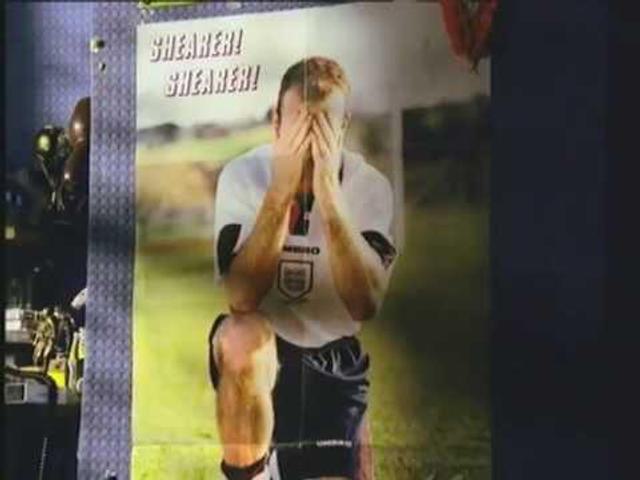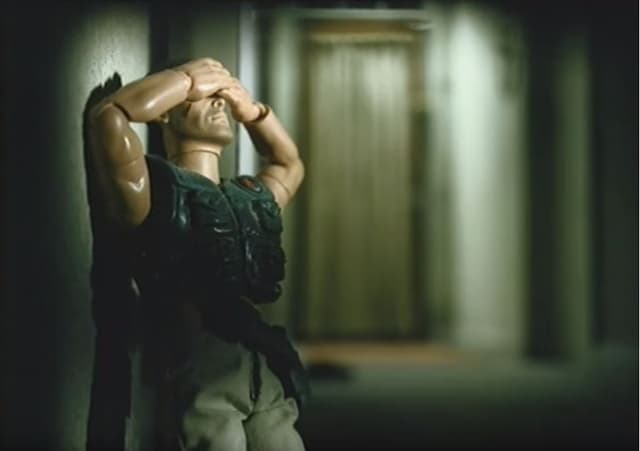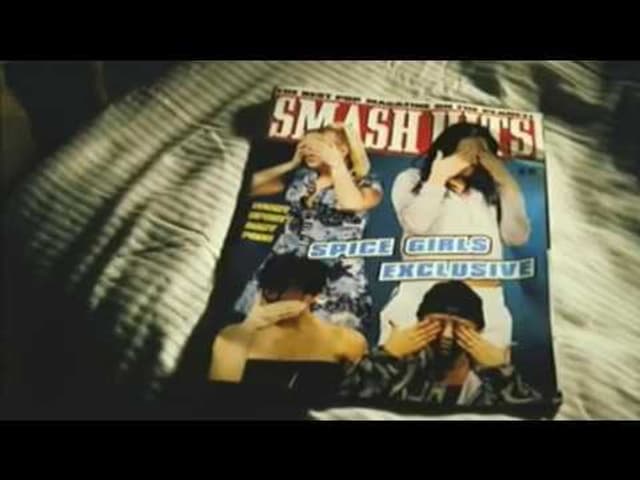NSPCC: ‘Can’t Look’ TV ad that launched the Full Stop campaign
- Exhibited by
- Giles Pegram CBE
- Added
- November 29, 2018
- Medium of Communication
- TV
- Target Audience
- Individuals, Supporters, Corporate Sponsors
- Type of Charity
- Children, youth and family
- Country of Origin
- UK
- Date of first appearance
- March 1999
SOFII’s view
TV advertising is an intrusive medium and harder to ignore because you see it in your own home. And homes are generally where abuse takes place. So we applaud the NSPCC's bold decision to launch the Full Stop campaign with a hard hitting and emotive TV ad that harnessed the power of the public's imagination and cleverly communicated how we can't look away from child abuse any more. A case of the end justifying the means? What do you think?
Summary / objectives
Unusually for NSPCC, the objective was to use TV advertising over a very short period of time to significantly promote the launch of the Full Stop campaign but with no direct response call to action.
Background
Giles Pegram was Appeals Director at the NSPCC and remembers some details of the Full Stop Appeal:
I hate brand advertising. I am not alone. If you want to know why, get in touch. But the launch of NSPCC’s Full Stop Appeal was different.
- We did no donor recruitment activity in 1998, so we had two years’ budget to spend, and we used most of it around our launch in March 1999, with heavy rotation of a new TV ad.
- We door-dropped every household in the country, asking people to ‘pledge to help end cruelty to children’ and donate, campaign or volunteer.
- We organised a weekend when there were stalls up and down the country, with volunteers, encouraging people to fill in the pledge form.
- We ran a PR campaign, including around the Duke of York’s involvement, but also around the very idea of aspiring to ‘end cruelty to children’. This was a first, well before ‘end poverty’ etc.
We wanted something more. Something that would bring all the elements together. We created a TV ad with no direct response call to action.
- To draw peoples’ attention to the notion that we were ‘closing our eyes’ to child cruelty.
- To introduce the concept of ‘Cruelty to children must stop. Full Stop.’.
- To demonstrate that we were serious.
In the film no image of cruelty is actually shown. Rather it is suggested through the soundtrack. Five scenarios are shown each using a deliberately chosen childhood icon: a teddy bear, Action Man (an iconic British toy action figure), Rupert the Bear (a children's comic strip character), the Spice Girls pop group and footballer Alan Shearer. All had their eyes covered as the suggestion of abuse is heard.
Microsoft was a corporate supporter of the NSPCC and sponsor of the Full Stop TV and poster advertising campaign to the tune of £1m. Estimated cost of the advertising campaign at that time was £2.7m.
Full Stop launched in March 1999 with the epic aim of securing an extra £250m in donations and pledges by the end of 2000.
Results
‘Can't Look’ was one of the NSPCC's most disturbing ads at the time. It was kept on the air despite 150 complaints, 46 of them from people with childhood experience. Marian Rose, NSPCC head of marketing at the time, said:
'We needed to break people out of their inertia - bring the issue of child cruelty closer to home. The feedback we got was mainly from people who had been abused. Opinion was pretty evenly split between those who said what we were doing was important and asked how they could help, and those who said "I don’t want to have to face this".'
At the time NSPCC took the view that the end justified the means. It could point to the undoubted success of its campaign to prove its no-holds-barred approach was justifiable. Rose cited NOP tracking research which showed 75% awareness of the ads, and further research which revealed that 'spontaneous awareness of the NSPCC’ rose by a third - more than double any other children’s charity. The ads also triggered a 300% increase in calls to the NSPCC helpline.
The ads also earned celebrity endorsement for the campaign: Pierce Brosnan, Ewan McGregor, Jude Law and Madonna wore the NSPCC’s green badge on the official Full Stop Day.
The advert was very successful in earned media too and featured in 71 television programmes, 230 radio shows, and there were more than 2000 articles and 500 pictures in newspapers and magazines.
‘Can't Look’ also won several prestigious advertising awards including a Golden Lion from Cannes Lions International Festival of Creativity.
Creator / originator
Saatchi & Saatchi
Special characteristics
Giles notes:
It was a one minute ad (unusually long at that time). It contained not a single image of a child. Yet it was described as: ‘One of the NSPCC's most disturbing ads yet’ and had many complaints to the Advertising Standards Authority. Why?
The TV ad was supported by outdoor poster advertising, using the same images.
Saatchis group director in 1999, John Rudaizky, said:
'Because of the nature of the issue, we've trod very carefully. Sadly, people have become immune to images of children with bruises. This, however, is more powerful because of what you don't see.'
It was not about shocking people to the extent that they feel helpless and despair, it was about motivating them 'to get out there and do something positive'.
'It's horrifying, yes. Because child abuse is horrifying. But this is more than just a horrifying ad. It's the first phase in a range of initiatives to encourage everyone to stop child cruelty. Full stop.'
The TV ad was so controversial that it ran post-watershed at 9pm.
Influence / impact
After the launch, 'ending cruelty to children' moved from the ninth most important cause to joint first with 'finding a cure for cancer'.





















